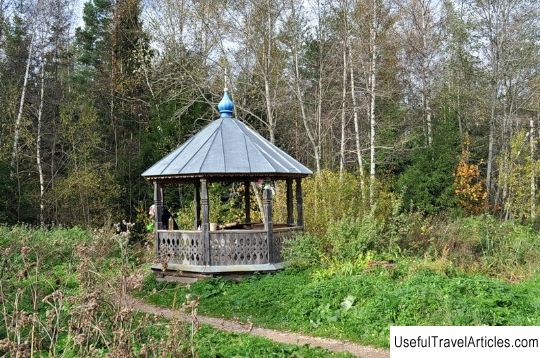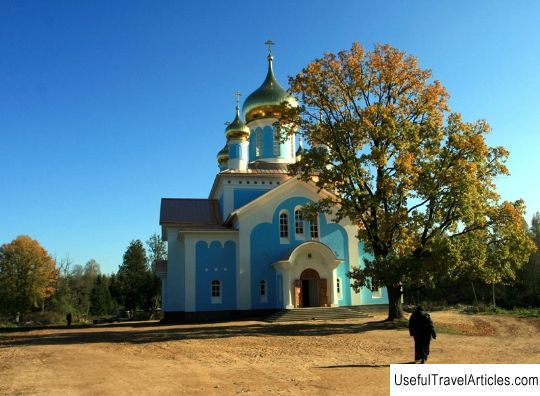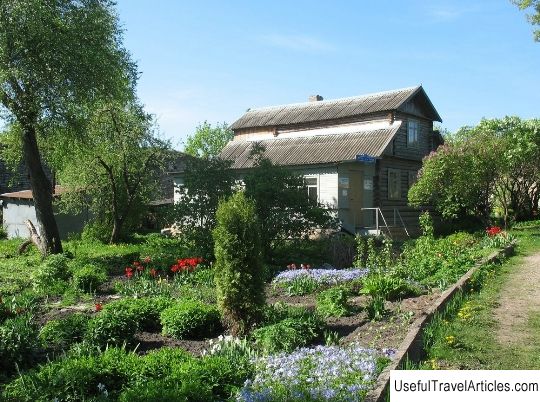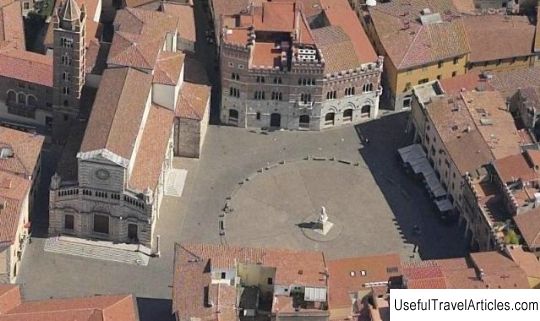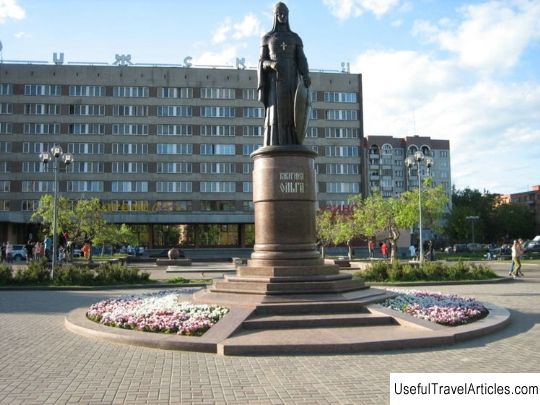Nikandrova Pustyn description and photo - Russia - North-West: Pskov region
Rating: 9,0/10 (6758 votes) 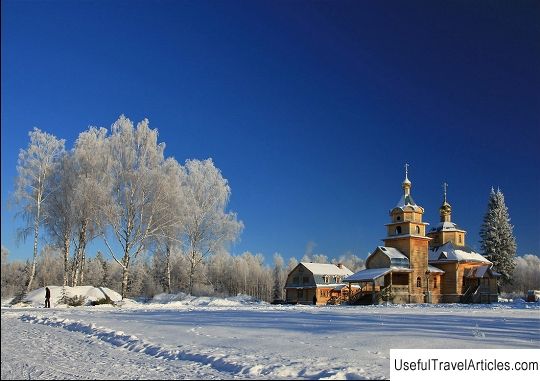
Nikandrova Pustyn description and photos - Russia - North-West: Pskov Region. Detailed information about the attraction. Description, photos and a map showing the nearest significant objects. Photo and descriptionNikandrova Pustyn is located 40 km from the town of Porkhov, near Demyanka. The desert was formed by the Monk Nikandr. This man was born on July 24, 1507 in a peasant family in the village of Videlebye, which is located in the Pskov region. At the age of 17, Nikon went to work for a merchant named Philip in the city of Pskov. After some time, he entered the Krypetsky monastery as a novice. Soon Nikon was tonsured a monk with the name Nikandr. The desire for a hermitic life and silence forced Nikandr to settle on an island located not far from the monastery, where he founded a hut for himself, but soon returned to his desert. Nikandr died in the fall of September 24, 1581, after which a certain deacon Peter decided to erect a small church over the grave of the monk, thereby, having laid the foundation of the monastery. In 1585, the layman Isaiah came to Nikandr's grave - it was during his reign that the Church of the Annunciation of the Mother of God was built at the grave of St. Nikandr in the person of the hegumen. Throughout 1652, with the blessing of Metropolitan Nikon, a wooden church was erected in honor of the Monk Nikandr. During the middle of the 17th century, wooden churches were built at the monastery in the name of the Monk Alexander of Svir and the Holy Trinity. In 1665, the Poles brutally plundered the monastery, and in the spring of 1667, due to a fire, all four churches, as well as all the monastery buildings, burned down. A new revival of the monastery began only under Tsar Alexei Mikhailovich. After Russia passed the 1917 revolution, the desert literally shared the fate of the largest number of monasteries. Production equipment, religious things, cattle, as well as monastery buildings were left to the monks for their "free" use, which gave the state the right to seize them at any time. On the basis of this decree, all the monastery property would have been exported at the beginning of the 20s of the 20th century to Petrograd and Leningrad, taking into account all the items made of silver at the end of the 18th century and even relics, a cypress cross and a shroud - the shrine of the monastery. After the Great Patriotic War, the monastery disappeared, although the place that was previously called Nikandrova Annunciation Hermitage still carries the status of a saint in the minds of Pskov residents to this day. A large number of pilgrims from all corners of Russia are attracted by the fact that there are two sacred stones on the territory of the desert, five keys and a holy oak - these objects became symbols of divine veneration among the Finnish and Slavic peoples even in distant pagan times. One of the stones is called the "head". After the death of the Monk Nikandr, this stone was kept in the main monastery church on the porch and was especially venerated among the monks, the local population and a large number of pilgrims. The stone called "God's Footprint" (an oval flat boulder with a small depression that clearly resembles the footprint of a human foot) has long been considered a saint, as it is said that this footprint was left by the Mother of God. An oak located in the desert was an object medieval worship. It is believed that under this oak Nikandr received pilgrims, showing a prophetic gift. After a while, Nikander was buried under an oak tree. The oak has not survived to our time - most likely, he died during a terrible church fire. In the Nikandrovaya desert, pilgrims must visit four holy springs, which are reservoirs of completely different sizes, which are enclosed in wooden log cabins. One of the keys is called "tomb", which contains bluish water enriched with rhodon. The other two keys are dedicated to Paul and Peter and are located next to the “God's footprint” stone. The farthest key is located immediately behind the monastery cemetery, which is completely destroyed today. This key is a pond of water that smells strongly of hydrogen sulfide, which is why it is covered with a yellowish foam. Now work continues on the revival of the Nikandrova Hermitage, the temples of the icon of the Mother of God `` Seeking the Lost '' are in operation and the Royal Passion-bearers, in 2011, the first divine service was held in the Cathedral of the Annunciation.                We also recommend reading Whiteman Park description and photos - Australia: Perth Topic: Nikandrova Pustyn description and photo - Russia - North-West: Pskov region. |
